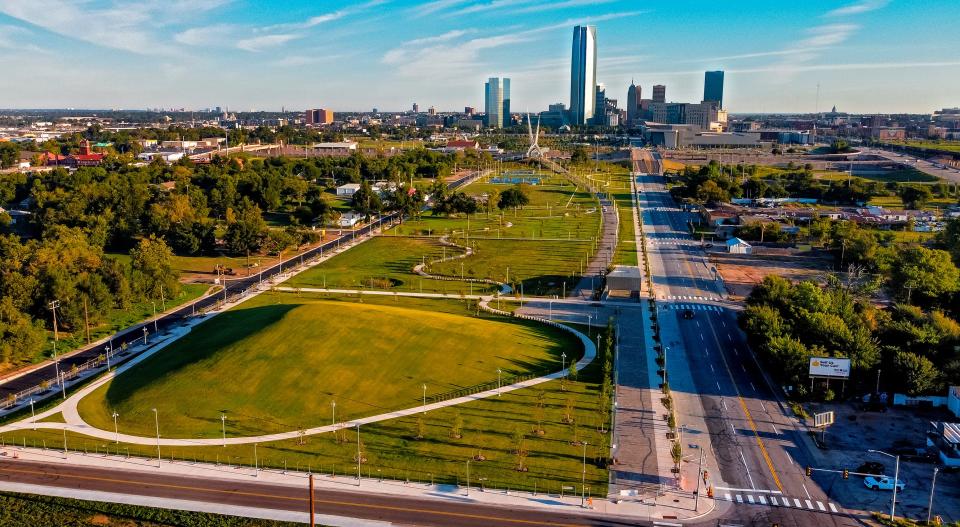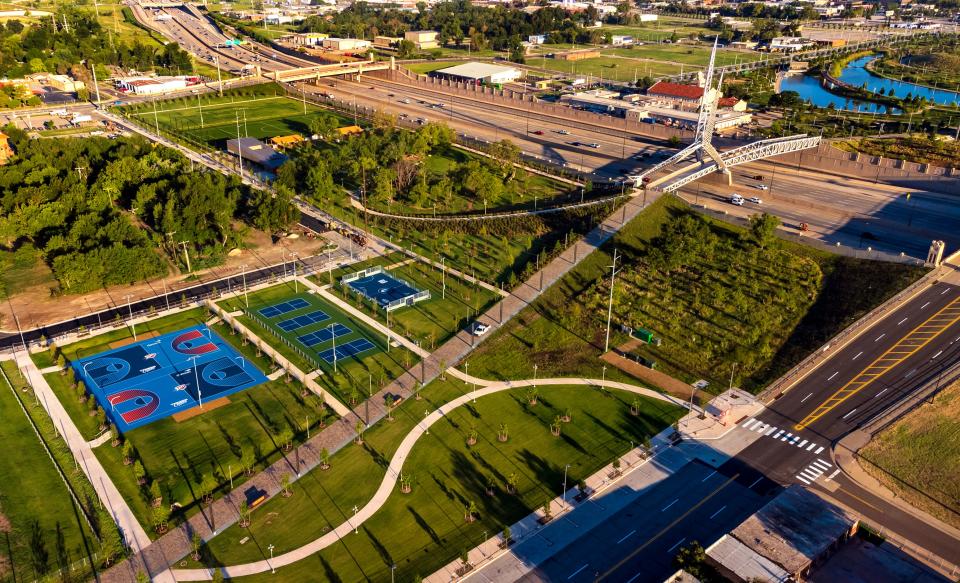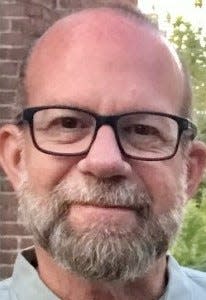Guest column: Why OKC's residents have personal stake in Scissortail Park
Having moved to Oklahoma City after two decades in Tulsa, we’re often asked which city we prefer. Truth is, we’d be happy in either. There are differences, however, many of which go back to each city’s origins.
Tulsa had the luxury of being built with money. When wildcatters struck oil south of town, it created a land run, of sorts. Wealthy prospectors rushed to Tulsa from the northeast. Their fortunes grew, and so did their generosity. Today, those fortunes still run through the city’s veins.
Oklahoma City was founded with a different sort of land run. With a single shotgun blast, farmers, drifters and cowboys lined up to claim their property. A tent city was born overnight. “All you had to do,” wrote Sam Anderson in his book “Boom Town,” “was get yourself there, hammer in your stakes, and fight off competitors.”
Pull hard on your bootstraps, and you can make it.
Today, there may be no better illustration of this difference than the creation of each city’s newest park.
The Gathering Place in Tulsa was built by George Kaiser and other philanthropists. It’s a show-stopper. The design, amenities and creativity are world-class. The Gathering Place was named USA Today’s Best City Park in 2021. Kaiser is to Tulsa what William Skelly and Waite Phillips were decades ago. He has single-handedly changed its landscape.
Oklahoma City on Friday opened the lower portion of Scissortail Park, officially completing the crown jewel of downtown. Sprawling more than 70 acres and one mile in length, Scissortail includes playgrounds, a stage for live performances, sports fields, paddleboats, trails, food trucks and restaurants, enormous grassy areas and beautiful views. Stop by on any nice day, and the place is bustling. It has become our front porch.

Each park is a point of civic pride, and rightfully so. But the pride in Scissortail springs from a different source: It was paid for by its residents. Scissortail was built by MAPS, a series of sales-tax initiatives whereby residents have literally re-made their city by voting to invest in themselves. Thirty years in, MAPS has become the city’s Golden Goose.
Remember that first big purchase with your own money? It hits differently from something that someone else bought for you. Ownership suggests more than possession. It’s a state of mind ― an acknowledgement of support.
That’s what we have in Scissortail Park. We envisioned it, we planned it, we paid for it, we built it. That makes it uniquely ours. Oklahoma City has proven it will take care of itself, whether it’s rebuilding a dilapidated downtown, digging out from massive tornadoes, or recovering from a deadly bombing.

I’m not bemoaning George Kaiser’s gift to Tulsa. It takes both public and private investments, and we’ve had our share of philanthropy ― for instance, the Chickasaw Nation stepping up to complete First Americans Museum, or the Thunder’s owners bringing the team here. We owe them all our thanks.
But our chests swell a bit more when we invest in ourselves, together.

Russ Florence lives and works in Oklahoma City. His column appears monthly in Viewpoints.
This article originally appeared on Oklahoman: Guest column: OKC's residents have personal stake in Scissortail Park

